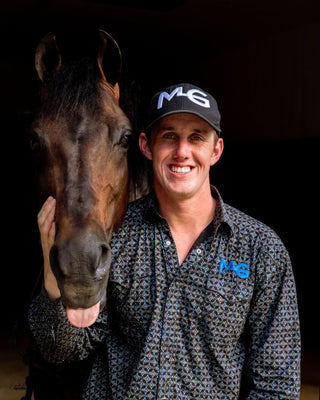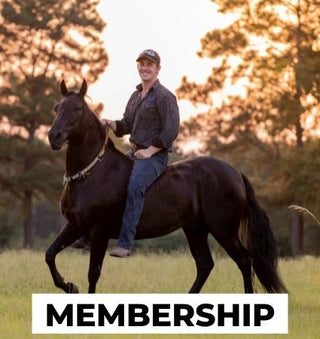Watch the Video Here or continue reading below!
Stopping a horse might seem like a simple concept, but for any serious rider, it's a foundational skill that can’t be overlooked. In this post, we’re breaking down what we call the “6th Grade Stop” — the point in your horsemanship journey where your horse learns to respect your body cues and stop on command. This isn’t about sliding stops or flashy maneuvers; this is about building respect and communication through consistent, effective stopping.
What Is the 6th Grade Stop?
The "6th Grade Stop" refers to a basic, non-negotiable form of horsemanship stopping. It’s not about advanced performance or reining stops — it’s about teaching your horse that “whoa means whoa.” No matter what discipline you're in, every horse should have this skill before moving on to anything else.
When a rider sits back and says "whoa," the horse should shut down immediately — without pulling, fussing, or ignoring the cue. It’s one of the first things that should be installed in every horse’s training program.
The Mechanics of the Horsemanship Stop
Step 1: Start at the Walk
Begin by walking your horse forward. Extend your arms fully with no bend in your elbows. This exaggerates your body position and helps clarify your intention to stop.
Step 2: Sit Back and Say "Whoa"
As you sit back deeply in the saddle and say "whoa," the horse should come to a halt right then and there. If not, the horse must feel the full weight and resistance of your body—not just your hands.
Step 3: Expect Respect
Many horses will initially resist, throw their heads, or lean against the pressure. This happens when they’ve been trained to slow down gradually rather than stop immediately. That’s why it’s so important to reinforce this concept early.
Why This Matters: Foundation Before Fancy
Before asking a horse to do any advanced work, they must understand and respect the stop. Whether it's a polo horse coming in for training or a young colt, this exercise builds mental discipline and physical control.
"If they don’t have the 6th grade stop, you don’t need to do anything else until they do."
This is as much about safety as it is about progression. A horse that doesn’t stop on cue is not only hard to train — they can be dangerous.
Reinforcing the Stop with Natural Horsemanship
The 6th Grade Stop can be trained effectively even in a natural horsemanship halter. It’s not about gadgets—it’s about clarity, consistency, and follow-through. When the horse learns that your body means stop, they begin to respond to subtle cues rather than heavy hands.
-
If they respond: reward them with softness.
-
If they resist: follow through with enough consequence to make them think twice next time.
Over time, stopping becomes muscle memory—a reflex, not a reaction.
From Walking to Gaiting
Once your horse is solid stopping at the walk, you can gradually increase difficulty by adding speed. Whether it’s a gaited horse, a trail horse, or one you're prepping for advanced moves later—every horse should stop cleanly and promptly before moving on.
What’s Next After the 6th Grade Stop?
Once you’ve mastered this foundational stop, you can move on to more advanced stops, such as sliding stops, collected stops, or reining maneuvers. But remember—none of those matter if your horse can’t stop with a simple “whoa” and a shift in your body weight.
Stay tuned for more videos in this series as we work up the performance ladder!
Final Thoughts
If your horse can’t stop when you ask, you don’t have control — you have momentum. Make stopping a non-negotiable, ingrained part of your training, and you'll build a horse that’s safer, more responsive, and more fun to ride.









